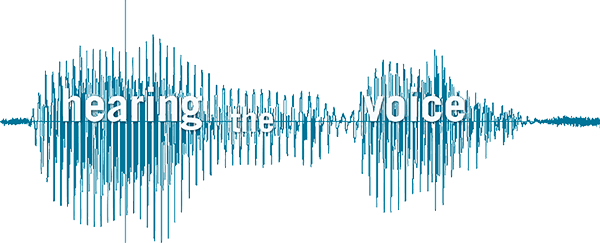In a recent piece for the Guardian’s Inner Voices series, our Postdoctoral Research Fellow in English Studies Dr Marco Bernini writes:
In a letter to Alan Schneider in 1957, Samuel Beckett wrote that: “My work is a matter of fundamental sounds (no joke intended), made as fully as possible, and I accept responsibility for nothing else. If people want to have headaches among the overtones, let them. And provide their own aspirin.”
This laconic statement has nourished a vast array of critical readings focusing on the sounds of words and the presence of music in Beckett’s fictional worlds. However, undoubtedly the most ubiquitous sound in Beckett’s work is that of the mysterious voices buzzing, murmuring or whispering within the heads of his characters. To borrow from the narrating figure in The Unnamable (1953), the narrative core of Beckett’s dark universes seems to be “all a matter of voices; no other metaphor is appropriate”. The question is: to what extent are voices in Beckett’s fiction just metaphorical presences?
The qualities of Beckett’s voices (alien, autonomous, without a recognisable source, and having aggressive or commanding contents) resonate with and sometimes even match the phenomenology of auditory verbal hallucinations (hearing voices in the absence of external stimuli).
From psychologist Louis Sass and philospher Gilles Deleuze, who first spoke of a “schizoid voice” in Beckett’s work, to investigators on the recent Beckett and Brain Science project, critics have highlighted correspondences between the distorted perceptions of Beckett’s characters and a wide gamut of psychiatric disorders. Nonetheless, this pathological framework of interpretation can be, if not reversed, at least complemented by non-pathological approaches which draw on contemporary cognitive research.
In fact, recent research in cognitive science and other fields has shown that hearing voices is more common than we think, including among people with no psychiatric diagnosis. The restless sound of our inner speech is a key experience of this commonality.
As the Dutch neurobiologist Bernard J Baars reminds us, “we are a gabby species” and “the urge to talk to ourselves is remarkably compelling”. Can Beckett’s voices be interpreted as the fictional rendering of our inner monologues – of the dialogues we constantly entertain within ourselves? Inner speech is hard to stop or to escape from, exactly as the sound described in Molloy (1951): “[it] is not a sound like other sounds, that you listen to, when you choose, and can sometimes silence, by going away or stopping your ears, no, but is a sound which rustles in your head, without you knowing how, or why. It’s with your head you hear it, not your ears, you can’t stop it, but it stops itself, when it chooses.”
Psychologists and cognitive scientists are, like Molloy, still struggling to understand the role and modalities of inner speech. What is certain is that for most of us it is, as the narrator of The Unnamable says, a “sound that will never stop”. A better understanding of inner speech can therefore help revisit the pathological framework through which Beckett’s voices have been largely interpreted. At the same time, Beckett’s fictional rendering and exploration of the pervasiveness of inner voices can expand the field of research by pointing, for instance, at new relationships between the internal dialogue we entertain with ourselves in inner speech and the imaginary creation/reception of literary characters; or even at the tight entanglement of inner speech and the narrative construction of our sense of selfhood.
Take, for example, works like Ohio Impromptu (1981). This late piece for theatre features an identical reader and listener. The reader tells the listener the story of the listener’s life. If we look at this work through the lens of the new research on inner speech, it appears as a masterful rendition of the simultaneous narrative and receptive activities that go on in our inner life. This inner relation in which we voice ourselves to ourselves relies extensively on our capacity to use our inner voice to allow multiple imaginative perspectives to emerge, as we do when wesilently voice characters when reading literature.
If inner speech is the raw material for hallucinatory phenomena, it is also at the centre of our imaginary engine – supporting our simple need for, as the homonymous text by Beckett portrays, an intimate Company (1980) in the inaccessible dark of our subjectivity.
This article was originally published here in the Guardian’s Books blog on 19 August 2014.
